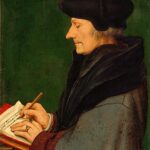As is well known, the unit of account of a year is the time taken by planet Earth for its orbit around the sun. The moon and stars also play a role in this measurement of time.
In Switzerland, there are 46 obervatories 26 of which are affiliated to the national organisation Schweizerische Astronomische Gesellschaft/Société astronomique suisse. One is the observatory St Margarethen near Binningen (canton of Basel-Landschaft). There are also various planetariums and hiking trails (Planetenwege).
The St Margarethen’s observatory, founded in the 19th century, was initially located in Basel near the Bernoullianum. In 1928, the observatory moved to its current location and belonged to the University of Basel until 2007.

Telescope of the observatory St. Margarethen
The ancient Egyptians, the seafaring Phoenicians, the Greeks and the Romans had already made pioneering investigations and discoveries of the universe and time measurement in years and days. The Vikings, on their (distant) sea voyages, also had the necessary experience of navigation and time measurement based on the stars, planets, sun and moon.
Ancient scientists have already discovered that the sun needs slightly more than 365 days to orbit the sun. This difference manifests in leap years, or 366 days a year, on 29 February.
The Egyptians developed the first calendars, and the Greeks and Romans perfected this system. The Romans are responsible for the names of months and days and the Julian calendar, which was valid in most of Europe until 1582.

François Ducommun (1763-1839), Planétaire, 1816. Collection: Musée international d’horlogerie
However, time measurement in hours and seconds was only realisable centuries later, after the development of mechanical clocks in the 15th and 16th centuries. The Museum of Horlogery (Musée d’horlogerie) in Le Locle and the International Horlogery Museum (Musée international d’horlogerie) in La Chaux-de-Fonds, celebrating its 50th anniversary, is dedicated to time measurement and its hardware. Nowadays, even a measurement in a Femtosecond, or 0.000 000 000 000 001 of a second, is possible.
In the Western world, Pope Gregory XIII (1502-1585) introduced the Gregorian calendar in 1582. Today, it is the calendar in almost all countries. However, the Chinese, Jewish, Japanese, and Buddhist calendars and other religions and governments are still (formally) different.

The introduction of the Gregorian calendar in Switzerland. Image: observatory St. Margarethen
The introduction of this (Catholic) calendar was not self-evident in European countries either. In Switzerland, it even took until 1812 before all 22 cantons of the Confederation used this calendar. The introduction in the Republic of the United Netherlands also lasted until 1701, with the provinces of Friesland, Groningen, Utrecht and Drenthe as the last territories.

Torùn, Nikolaus Copernicus
Nikolaus Copernicus (1473-1543) from Torùn (Poland) and Galileo Galilei (1564-1642) from Florence are the best-known names of scholars. The Basler scholar Peter Megelin (1623-1686), professor at the University of Basel, published in Amsterdam in 1682 his pioneering book Systema Mundi Copernicanum. Johannes Hevelius (1611-1687) from Gdansk (Danzig) published Selenographia sive Lunae Descriptio and other important studies, some of which are still valid today!

 Images: observatory St. Margarethen
Images: observatory St. Margarethen
The former observatory in Binningen is dedicated to this history and is still used as a measuring instrument for various meteorological purposes. The Astronomische Verein Basel manages the observatory today.
On certain days, the observatory is open to the public, who can use the telescopes (in clear weather). Even with cloudy skies, the observatory is worth visiting for its (scientific and historical) information and simulations of a cloudless sky.

Image: observatory St. Margarethen
The universe, including the sun, stars, planets, galaxies, and other celestial bodies, anywhere in the world, regardless of religion or political system, has one thing in common: the Sky is the limit, and it never gets boring.
Eise Eisinga (1744-1828) was never bored in Franeker either. In 1781, he completed the world’s oldest still-functioning planetarium (a Unesco World Heritage site). Recently, the calendar was manually moved forward one day because of the leap year!
(Source and further information: Astronomischer Verein Basel)

The planet Jupiter. Image: observatory St. Margarethen


Images: observatory St. Margarethen
























































 Images:
Images: 



